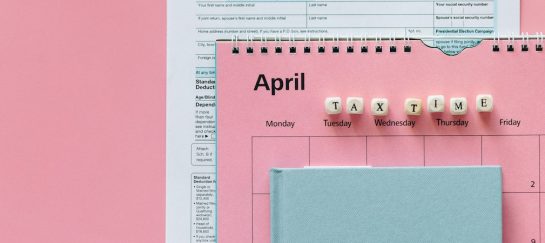
The Difference Between Form 940 and 941
In the realm of U.S. business taxation, numerous forms may seem perplexing, particularly when they appear to serve similar functions. Among these are Forms 940 and 941, both integral to the payroll process yet serve distinct purposes. Form 940, officially known as the Employer’s Annual Federal Unemployment (FUTA) Tax Return, is used to report and pay unemployment taxes if you paid wages of $1,500 or more to employees during any calendar quarter. On the other hand, Form 941, the Employer’s Quarterly Federal Tax Return, is a quarterly tax form that reports the number of employees, wages paid, and withheld federal income tax. Understanding the intricacies of each form is crucial to ensuring accurate tax reporting and compliance.
Frequency of Submission
Form 940 is an annual filing, due on January 31st of the year following the tax year, while Form 941 is filed quarterly. This difference in frequency underscores the different purposes of each form. The annual filing of Form 940 aligns with the nature of unemployment taxes, which are calculated per annum. Conversely, the quarterly submission of Form 941 corresponds to the regular employer’s obligation to withhold income tax and contribute to Social Security and Medicare. Moreover, Form 941 enables the IRS to monitor an employer’s tax liability closely throughout the year, ensuring accurate and timely payment of taxes. It’s crucial that businesses adhere to these timelines to avoid penalties and maintain compliance with IRS regulations. Furthermore, the IRS Form 941 Schedule B is an additional form that should be filed along with Form 941 if there are any adjustments to income taxes or Social Security and Medicare taxes. In addition, Form 941-X can be used to make corrections to mistakes on a previously filed return.
Purpose
While both Forms 940 and 941 are of paramount importance, their purposes diverge. Form 940’s main purpose is to fund unemployment compensation for workers who lost their jobs. Employers submit yearly contributions to the federal unemployment tax, which in turn provides financial aid to individuals who are out of work. On the other hand, Form 941’s primary purpose is to ensure employers duly withhold their employees’ earnings for federal income tax, Social Security, and Medicare liabilities. It plays a crucial role in safeguarding employees’ financial future by contributing to their Social Security and Medicare benefits. These forms, although similar in their payroll tax processes, focus on different aspects of employee welfare. Thus, understanding their respective purposes is vital for businesses to ensure compliance with IRS regulations, proper employee compensation, and avoiding potential taxation errors.
Applicability
Form 940 is universally applicable to employers who pay wages of $1,500 or more to employees in any calendar quarter or have at least one employee for some part of a day in any 20 or more different weeks in the year. This form accounts for all types of employees, full-time, part-time, and temporary, providing broad coverage under the Federal Unemployment Tax Act (FUTA). In contrast, Form 941 is more specific and pertains to employers who withhold income taxes, Social Security tax, or Medicare tax from employee’s paychecks or who pay these taxes on behalf of the employees. This form is generally not used by agricultural employers, household employers, or employers of fishing crew members – these employers have special forms designed to cater to their unique tax situations. Employers must evaluate their workforce, payroll practices, and type of business to determine which forms apply to them. Incorrect application or non-compliance with these forms can result in penalties from the IRS.
Tax Responsibility
The funds for the taxes reported on Form 940 are solely the responsibility of the employer; they are not deducted from employee wages. On the other hand, the taxes reported on Form 941 are partially withheld from employee wages and partially matched by the employer. The employer withholds the employee’s federal income tax, Social Security tax, and Medicare taxes from their paycheck for any given pay period. Furthermore, the employer pays an equal amount as a matching contribution for each employee. Combined with the employee contributions, these funds are then reported on Form 941. These taxes can be used as deductions on the employer’s personal or business tax return and can help reduce the employer’s overall tax liability. In the event of LLC vs. LLP, however, the taxes are generally only reported on the employees’ W-2 forms and not on Form 941. Tax responsibility in the case of LLCs and LLPs is addressed further in IRS Publication 15.
Penalties
Employers who do not complete and submit Form 940 in a timely manner are subject to monetary penalties. Similarly, employers who fail to file Form 941 on time may be liable for fines as well. The IRS charges a penalty of 5% for each month or part of a month that the form is late, up to 25%. If an employer fails to file Forms 940 or 941 for multiple periods, the penalties will be charged separately. To ensure prompt and accurate filing of these forms, employers are strongly encouraged to maintain proper records with all relevant information regarding their employees. In addition, businesses should make sure they use the proper forms for their industry and employee count to ensure compliance.
Additional Information
Also, Form 940 requires employers to report any credits available, such as state unemployment taxes paid. On the other hand, Form 941 requires that employers provide additional information about their employees including Social Security numbers and dates of birth. This information is used by the IRS to confirm that employers are withholding and remitting taxes from their employees. In addition, it also helps protect workers from identity theft. Employers should be aware of their filing requirements to avoid any potential penalties. It’s also best practice for them to maintain accurate records of all employee wages and other associated tax information throughout the year and ensure timely submission of Forms 940 and 941. Doing so will help employers maintain their compliance with IRS regulations while also ensuring that employees receive the taxes they are due.
In summary, both Forms 940 and 941 play critical roles in employee welfare but serve different purposes. The funds reported on Form 940 are discharged solely by the employer, whereas Form 941 balances between employer and employee contributions. It is essential for employers to understand their filing requirements, maintain accurate records, and submit the forms on time in order to avoid potential penalties from the IRS. By properly understanding the difference between Form 940 and 941, businesses can ensure compliance with IRS regulations while safeguarding their employees’ financial future.
Daily Newsletter
Subscribe to Jebiga for a dose of the best in gear, design, rides, tech and adventure.






